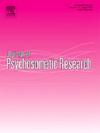接受雄激素剥夺治疗的前列腺癌患者单极重性抑郁患病率:年龄、治疗时间和前列腺癌分期的影响
IF 3.3
2区 医学
Q2 PSYCHIATRY
引用次数: 0
摘要
前列腺癌是男性最常见的恶性肿瘤。雄激素剥夺疗法(ADT)是前列腺癌的一种常用治疗方法,可能会增加患抑郁症的风险。本研究探讨单极重性抑郁症在ADT患者中的患病率及潜在的危险因素。方法对217例接受ADT治疗的前列腺癌患者进行横断面研究。用抑郁症状自我报告量表(IDS-SR)筛选抑郁的存在。IDS-SR得分高于分界点的患者被邀请进行半结构化的临床访谈以诊断抑郁症。对于未接受访谈的患者,分析IDS-SR的个别项目以评估是否存在DSM-5的核心标准。采用多变量分析来评估危险因素(年龄、ADT持续时间和前列腺癌分期)与IDS-SR评分以及抑郁存在之间的关系。结果在所有患者中,35%的患者得分高于IDS-SR分界点,8.3%的患者被诊断为重度抑郁症。此外,在纳入的患者中,年龄、ADT持续时间和前列腺癌分期与IDS-SR评分无显著相关性,与抑郁的存在也无显著相关性。结论8.3%的单极重性抑郁症患病率表明,在接受ADT的前列腺癌患者中警惕共病性抑郁症的重要性。然而,由于缺乏权力,我们无法在该患者组中确定具体的危险因素。本文章由计算机程序翻译,如有差异,请以英文原文为准。
Prevalence of unipolar major depression in prostate cancer patients undergoing androgen deprivation therapy: The impact of age, treatment duration and prostate cancer stage
Introduction
Prostate cancer is the most common malignancy among men. Androgen deprivation therapy (ADT), a common treatment for prostate cancer, may contribute to an increased risk for depression. This study examines the prevalence of unipolar major depression in patients undergoing ADT and potential risk factors.
Method
A cross-sectional study was conducted among prostate cancer patients receiving ADT (n = 217). The presence of depression was screened with the Inventory of Depressive Symptomatology Self Report (IDS-SR). Patients with IDS-SR scores above the cutoff point were invited for a semi-structured clinical interview to diagnose depression. For non-interviewed patients the individual items of the IDS-SR were analyzed to assess whether core criteria of the DSM-5 were present. Multivariable analyses were performed to evaluate the association between the risk factors (age, ADT duration and prostate cancer stage) and the IDS-SR score as well as the presence of depression.
Results
Of all patients, 35 % scored above the cutoff point of the IDS-SR and 8.3 % were diagnosed with major depression. Furthermore, among the included patients, age, ADT duration and prostate cancer stage were not significantly associated with the IDS-SR score, neither with the presence of depression.
Conclusion
The 8.3 % prevalence of unipolar major depression highlights the importance of being vigilant about a comorbid depression in prostate cancer patients undergoing ADT. However, due to a lack of power, we were unable to identify specific risk factors within this patient group.
求助全文
通过发布文献求助,成功后即可免费获取论文全文。
去求助
来源期刊
CiteScore
7.40
自引率
6.40%
发文量
314
审稿时长
6.2 weeks
期刊介绍:
The Journal of Psychosomatic Research is a multidisciplinary research journal covering all aspects of the relationships between psychology and medicine. The scope is broad and ranges from basic human biological and psychological research to evaluations of treatment and services. Papers will normally be concerned with illness or patients rather than studies of healthy populations. Studies concerning special populations, such as the elderly and children and adolescents, are welcome. In addition to peer-reviewed original papers, the journal publishes editorials, reviews, and other papers related to the journal''s aims.

 求助内容:
求助内容: 应助结果提醒方式:
应助结果提醒方式:


